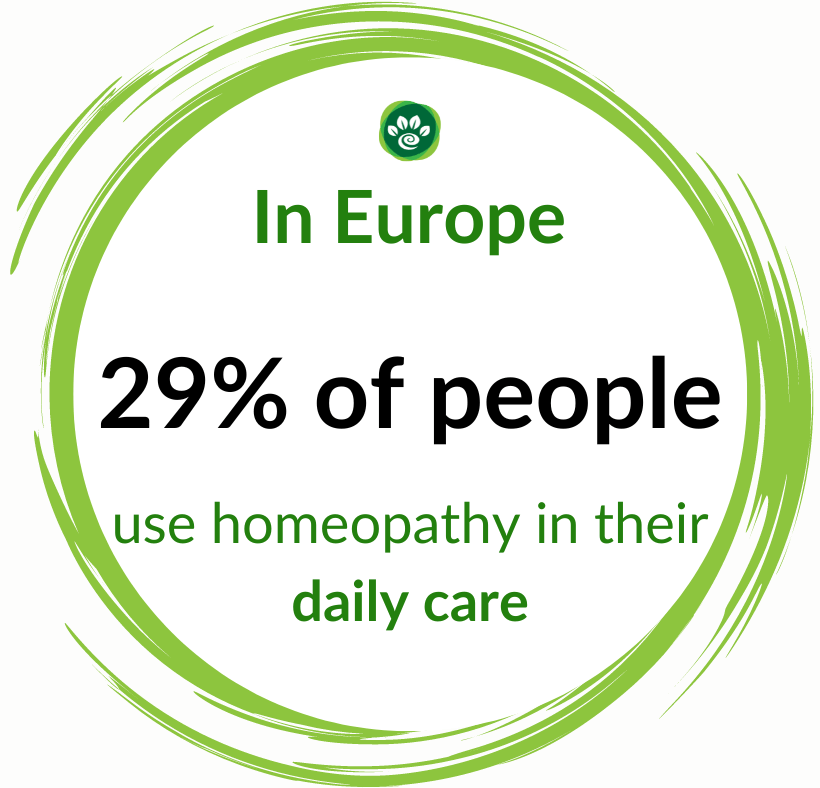
Does Your Dog Have Low Blood Sugar? Here are the 4 Best Home Remedies You Can Use
Are you concerned about your dog's lack of enthusiasm for his favorite games, his recent loss of appetite, or his unusual thirst? These signs, which can go unnoticed, could actually be hiding a more serious health problem.
These symptoms may be related to hypoglycemia, a drop in your pet's blood sugar level. If left untreated, this condition can have very serious, even life-threatening, consequences.
- Click to learn more: 👉 NATURAL support for your dog suffering from HYPOGLYCEMIA. 🐶
Drawing on our expertise in holistic medicine, my team and I at HomeoAnimo would like to share with animal lovers worldwide some natural methods to help your dog overcome this condition.
To begin, let's clarify what exactly low blood sugar in dogs means.
What is Canine Hypoglycemia?

Hypoglycemia, a term that technically refers to a sugar deficiency in the blood, occurs when a dog's glucose level drops to 3.3 mmol/L (60 mg/dL) or less.
Since a dog's cells use glucose as essential fuel, such a deficiency deprives them of vital energy, leading to a series of dysfunctions in the body.
Contrary to popular belief, hypoglycemia is not a disease in itself, but rather a symptom of another underlying condition or the result of exposure to certain substances.
The physiological disturbances it causes can vary considerably, ranging from a simple decrease in the desire to move to epileptic seizures, sudden collapse, and even, in the most extreme cases, the death of the animal.
Why Can Your Dog's Blood Sugar Drop?

Several factors can cause hypoglycemia in a dog. Here are the most common causes:
Insufficient Glucose Production
One of the main causes is the animal's body's inability to produce enough glucose to supply its cells with energy.
This phenomenon is often seen in young puppies whose glucose production is still unstable, as well as in older dogs whose age-related illnesses compromise this vital function.
In addition, studies indicate that small breeds, such as the Shih Tzu, Yorkshire Terrier, Chihuahua, Pomeranian, Pug, Lhasa Apso, Pekingese, and Bichon Frise, are particularly predisposed to this problem.
Excessive Glucose Consumption
Some dogs tend to deplete their glucose reserves during intense or prolonged exercise. This overconsumption, often combined with delayed meals, can cause their blood sugar to drop.
While this can happen to any dog, it is more often observed in naturally very active breeds, such as the Belgian Malinois, Jack Russell Terrier, Border Collie, Dobermann, Australian Shepherd, Irish Setter, and Boxer.
Excessive Insulin Administration
Although it may seem counterintuitive, an overdose of insulin in a diabetic dog can lead to a sudden and dangerous drop in its blood sugar.
Insulin's purpose is to regulate glucose levels. An excess of insulin in the body triggers a compensation mechanism that reduces the amount of sugar in the blood, which can cause severe hypoglycemia.
It is therefore essential to administer insulin with extreme precision, as the consequences of an inappropriate dosage can be dramatic.
Excessive Exercise
While regular physical activity is essential for your dog's health, practicing it too intensely or for too long can unbalance its blood sugar level and lead to hypoglycemia.
To avoid this, it is essential to provide sufficient rest periods and to ensure that meals are not skipped, especially before demanding training like agility.
Ingestion of Toxic Substances
Certain products commonly found in our homes can cause hypoglycemia. The most dangerous are antifreeze and sweeteners like xylitol, which can cause severe kidney damage.
When the kidneys are failing, the body can no longer properly regulate insulin levels. This can then lead to extreme variations in blood sugar, which can become either too high or too low.
Underlying Medical Conditions
Hypoglycemia can also be a symptom of medical conditions that prevent your dog's body from maintaining a stable blood sugar level.
These diseases include Addison's disease, liver dysfunction, a pancreatic tumor, sepsis, malnutrition, as well as certain cancers such as malignant melanoma, leukemia, and metastatic liver cancers.
Let's now discover the clinical signs of hypoglycemia.
What Are the Warning Signs of Hypoglycemia?

Here are the most common symptoms that should alert you:
- A sudden loss of tone and enthusiasm
- Disorientation or confusion
- Slow movements, accompanied by tremors or muscle spasms
- A sudden loss of appetite
- An accelerated heart and breathing rate
- Weakness or even paralysis of the limbs
- Vision problems
- Convulsions
- Loss of consciousness
If you observe two or three of these symptoms, it is imperative to contact your veterinarian without delay. In the meantime, you can use natural remedies for first aid, which we will discuss a little later.
How Long Does Hypoglycemia Affect the Dog?
The duration of hypoglycemic episodes can vary from 24 to 72 hours. This depends on the age of the animal and its general health. It should be noted that dogs suffering from underlying diseases take longer to recover.
Likewise, a dog that has received an insulin overdose will experience longer episodes of hypoglycemia, the severity of the overdose being directly linked to the persistence of the symptoms.
Let's now examine the substances that can trigger this condition.
What Toxins Can Cause Hypoglycemia?
Two major toxins can cause hypoglycemia: ethylene glycol, a compound used for its water absorption properties, and xylitol, a sugar substitute.
Although ethylene glycol is present in products such as cosmetics and de-icers, it is best known as an ingredient in antifreeze.
As for xylitol, it is found in many sugar-free products, such as jams, candies, peanut butters, mouthwashes, and chewing gums.
The danger of these substances lies in their sweet taste, which attracts dogs. As we have mentioned, their ingestion can disrupt kidney function, which can lead to a sudden drop in blood sugar levels.
Can I Give My Dog Sugar Water if He Has Hypoglycemia?

Yes, it is a first-aid intervention.
If your dog shows symptoms of hypoglycemia, the simplest solution is to prepare sugar water by mixing a tablespoon of sugar in a glass of water. Make sure the sugar is completely dissolved.
The amount to give depends on your dog's size: a few teaspoons for small breeds and tablespoons for large breeds, to be administered every half hour.
If your pet has trouble swallowing, a syringe can help you get him to drink the mixture.
If you don't have sugar, you can use other options such as maple syrup, molasses, coconut syrup, stevia, or carob.
Let's now discover the best home remedies for canine hypoglycemia.
How Can I Help My Dog at Home?

If you observe the symptoms of hypoglycemia in your dog, here are some natural remedies you can use:
Honey, a natural pancreas stimulant.
A study from the National Center for Biotechnology Information (NCBI) has shown that honey, in addition to its natural sugars that help stabilize blood sugar, also stimulates glucokinase, a "glucose sensor" that optimizes insulin production by the pancreas.
The study also highlights the key role of glucokinase in how the liver absorbs and stores glucose.
For an immediate effect, apply a small amount of honey directly to your dog's gums as soon as you notice signs of hypoglycemia. You can also use it to prepare sugar water.
Pineapple, a perfect balance.
According to Medical News Today, pineapple has an almost perfect balance of glycemic load and water content, allowing the body to absorb it easily without causing a sudden spike in blood sugar.
Its richness in minerals such as zinc, calcium, iron, magnesium, potassium, and manganese also helps improve your dog's overall digestive health.
To use pineapple, peel and core the fruit, then blend it with a blender, food processor, or juicer. Strain the liquid to remove the fibrous bits and give it to your dog as is or mixed with his water.
Apples, a source of easily convertible carbohydrates.
According to the National Institute of Diabetes and Digestive and Kidney Diseases (NIDDK), apples are full of carbohydrates that are converted into glucose very quickly once digested.
This characteristic makes them a handy remedy in an emergency. To use them, remove the core and seeds, then juice the apple. You can give the juice directly to your dog or mix it with his food.
Bananas, a quick absorption.
The University of San Francisco Health indicates that bananas are a safe food for dogs that are easily absorbed by the body and "will raise blood sugar levels quickly."
The study highlights that bananas' ability to increase blood sugar is far greater than that of foods rich in protein and fat, such as bread, crackers, cookies, or chocolate.
To use a banana as a home remedy, mash it thoroughly until it forms a thick puree and serve it directly to your dog as soon as symptoms appear.
A Product to Have in Your Dog's First-Aid Kit

TonicAnimo #10 is a natural product that promotes the balance of acidity in your dog's body, which helps maintain an ideal glucose level.
A study published in the National Center for Biotechnology Information (NCBI) revealed an "inverse relationship between blood glucose and acid production." It states that "low glucose levels are associated with high rates of acid secretion" and vice versa.
Made from Natrum phosphoric, TonicAnimo #10 helps maintain your dog's blood sugar at an optimal level, thereby reducing the risk of hypoglycemia. In addition, this product contributes to the proper functioning of the digestive tract and joints.
To use it, crush the recommended number of pellets and mix them into your dog's food or water twice a day.
Here are the recommendations based on your dog's weight:
- 0-25 lb: 1 pellet
- 25-50 lb: 2 pellets
- 50-75 lb: 3 pellets
- Over 75 lb: 4 pellets
If you are looking for a quality product to help your dog maintain his blood sugar, TonicAnimo #10 is an excellent option to consider.
FAQ about Hypoglycemia in Dogs
How often should I feed a dog prone to hypoglycemia?
The frequency of meals for a dog prone to hypoglycemia is no different from that of another dog.
The important thing is to stick to fixed and consistent meal times to avoid unexpected drops in blood sugar.
Can I exercise a hypoglycemic dog?
Yes, but with moderation.
It is crucial to limit the duration and intensity of exercises to prevent him from overexerting himself, which could cause his blood sugar to drop.
It is recommended to only have him do light to moderate exercises, such as walking, swimming, or playing. Agility, for example, should be avoided.
Is canine hypoglycemia contagious?
No, hypoglycemia is not a transmissible disease. It cannot be passed from one dog to another.
Conclusion
We hope this article has been useful to you in better understanding canine hypoglycemia and knowing how to react. It is important to remember that this condition should never be taken lightly.
If you are concerned that your pet may be suffering from a health problem, our Free Animal Health Recommendation can help you. In addition to getting advice and recommendations from our Natural Health Advisors, they will also guide you through the products and treatment options that best suit your pet's health needs.

























1 comment
Article très intéressant car mon petit Lhassa Apso de 16 ans montre parfois des signes ressemblant beaucoup à ceux répertoriés dans celui-ci.
Merci à toute l’équipe , excellente journée à tous.
Sigrid, Danièle, Claire PAUSIER MATUS
Leave a comment
This site is protected by hCaptcha and the hCaptcha Privacy Policy and Terms of Service apply.